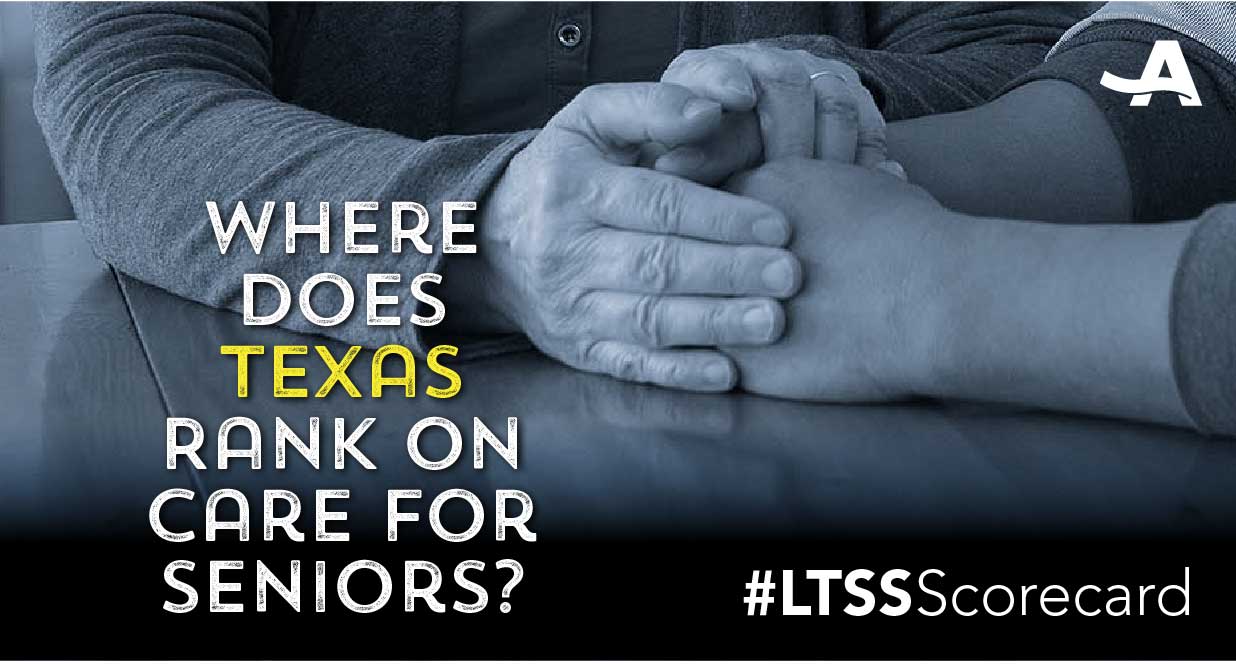AARP Hearing Center
Texas ranks 35 th when it comes to meeting the long-term care needs of older residents and people with disabilities, and AARP warns more must be done, at an accelerated pace, to meet changing demographic demands. Specific areas of concern in Texas include the percent of high-risk nursing home residents with pressure sores, as well as the percent of nursing home residents who are inappropriately receiving an antipsychotic medication. This, according to a new, comprehensive state-by-state Scorecard from AARP with support of the nation’s leading organizations behind quality long-term care, The Commonwealth Fund and SCAN Foundation.
Picking Up the Pace of Change: A State Scorecard on Long-Term Services and Supports for Older Adults, People with Physical Disabilities, and Family Caregivers – the third in a series of reports—ranks each state overall and on 25 specific indicators in five key dimensions: affordability and access; choice of setting and provider; quality of life and quality of care; support for family caregivers; and, effective transitions between nursing homes, hospitals and homes.
“The vast majority of older Texans want to live independently, at home, as they age—most with the help of unpaid family caregivers,” says Bob Jackson, state director of AARP Texas, which serves more than 2.2 million members age 50 and older in Texas. “Even facing tight budgets, Texas is making some progress to help our older residents achieve that goal. However, this Scorecard shows we have more to do, and we need to pick up the pace.”

Today, unpaid family caregivers provide the bulk of care for older Texans, in part because the cost of long-term care remains unaffordable for most middle income families. In Texas, more than 3.3 million residents help their aging parents, spouses and other loved ones stay at home by providing assistance with bathing and dressing, transportation, finances, complex medical tasks like wound care and injections, and more. The value of this unpaid care totals about $35.5 billion a year.
“When it comes to helping older Texans live in the setting of their choice, family caregivers take on big responsibilities,” explains Jackson. “Many juggle full-time jobs with their caregiving duties; others provide 24/7 care for their loved ones. With every task they undertake, these family caregivers save the state money by keeping their loved ones out of costly nursing homes. They have earned some basic support.”
According to the state Scorecard, Texas needs to do more to improve legal and system supports for working family caregivers and to bolster transportation policies to better support family caregivers.
But Texas is making some progress. AARP is pleased to have backed legislation that the Texas Legislature approved and Governor Greg Abbott signed into law this year that will ease the transition from hospital to home for patients and their family caregivers. The Caregiver, Advise, Record, Enable (CARE) Act allows hospital patients upon admission to designate a caregiver. Hospitals will maintain a record of the caregivers contact information and before the patient is discharged, the hospital will prepare both the patient and the caregiver for any treatments that will need to happen at home.
The single strongest predictor of a state’s long-term care system is the reach of its Medicaid long-term care safety net. That’s why AARP fought to expand services provided at home and in the community. While the inappropriate use of antipsychotic medication in nursing homes has decreased, there could be even more improvement. In addition, the Scorecard highlights additional major issues related to institutional care in Texas: like the percentage of high-risk nursing home residents with pressure sores.
While Texas does rank 7th in the percentage of Medicaid long-term care dollars for older adults and people with physical disabilities that support care provided at home and in the community—the care setting that most Texans prefer—the Scorecard spotlights areas that call for improvement. Specifically:
- Texas ranks 38th in the percent of high-risk nursing home residents with pressure sores (6.4 percent).
- Texas ranks 49th in the percent of long-stay nursing home residents who are receiving an antipsychotic medication (20.8 percent).
- Texas ranks 46th in the percent of long-stay nursing home residents hospitalized within a six-month period (21.4 percent).
- Texas ranks 49th in the percent of new nursing home stays lasting 100 days or more.
“This Scorecard gives us a snapshot of how well Texas serves our older residents, those with disabilities, and family caregivers—and shows us where we must sharpen our focus to better assist hardworking Texans,” concludes Jackson.
In less than 10 years, Boomers will begin to turn 80, placing new expectations and demands on a still imperfect long-term care system. Long-term care (also called long-term services and supports) is a diverse set of services designed to help older people and those with disabilities; services can be provided in a person’s home, in a community setting such as an adult day center, or in a group residential facility like a nursing home.
The full state Scorecard, along with an interactive map of state rankings and information, is available at www.longtermscorecard.org.































































